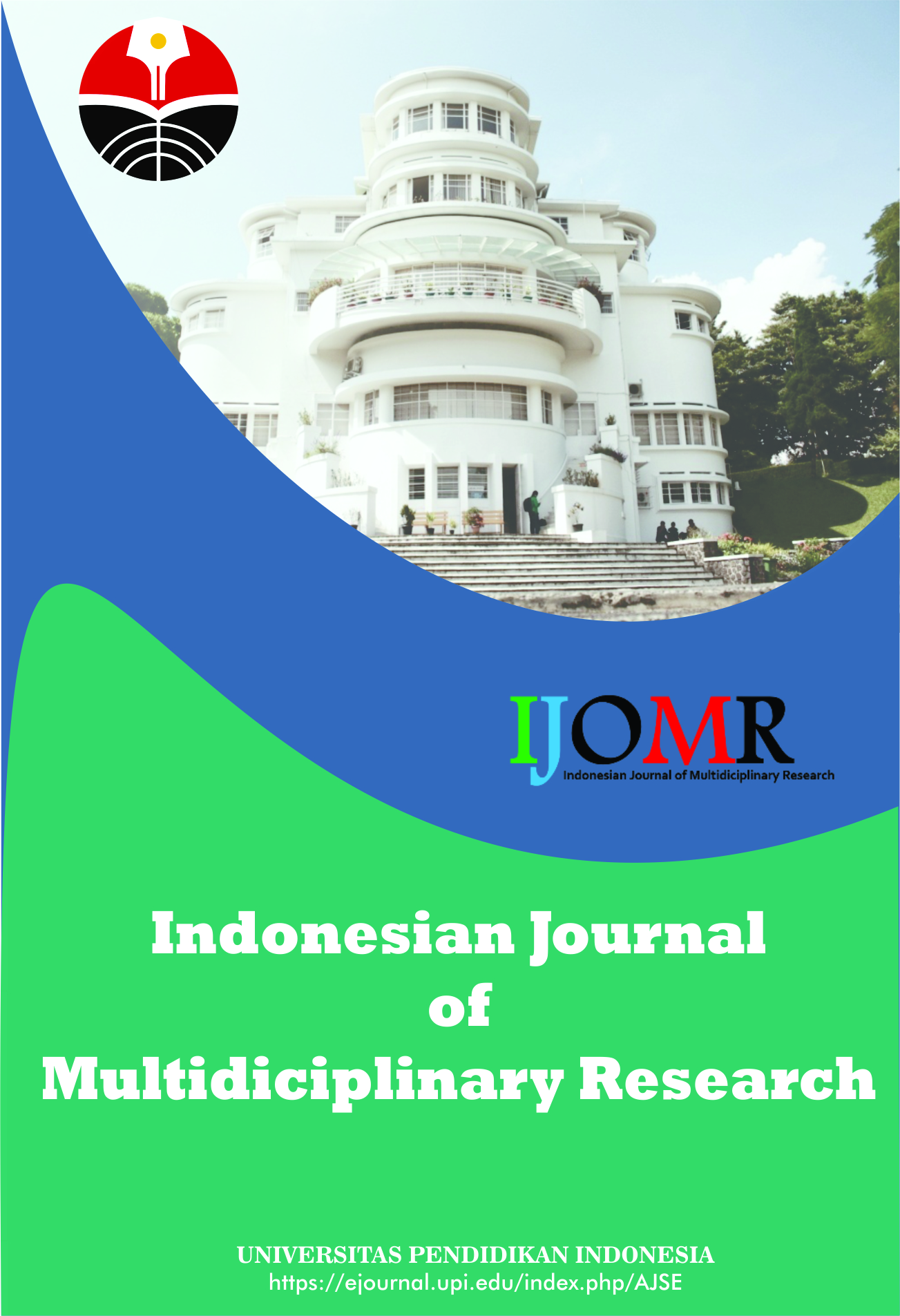Learning Experience in the Mini Museum Atsiri Oil in Sarinah Jakarta Indonesia with the Application of Video Mapping Technology
Abstract
Keywords
Full Text:
PDFReferences
Adhiarso, D. S., Utari, P., and Hastjarjo, S. (2018). The impact of digital technology to change people’s behavior in using the media. Journal of Social Sciences and Humanities, 2, 35-40.
Brown, P. S. (2007). A critique of generic learning outcomes. Journal of Learning Design, 2(2), 22-30.
Carbon, C. C. (2017). Art perception in the museum: How we spend time and space in art exhibitions. i-Perception, 8(1), 2041669517694184.
Chakrabartty, S. N. (2014). Scoring and analysis of likert scale: Few approaches. Journal of Knowledge Management and Information Technology, 1(2), 31-44.
Chyung, S. Y., Roberts, K., Swanson, I., and Hankinson, A. (2017). Evidence-based survey design: the use of a midpoint on the likert scale. Journal of Performance Improvement, 56(10), 15-23.
Dyussenbayev, A. (2017). Age periods of human life. Advances in Social Sciences Research Journal, 4(6), 258-263.
Fatta, F., and Fischnaller, F. (2018). Enhancing cultural heritage exhibits in Museum Education: 3D Printing Technology: Video mapping and 3D printed models merged into immersive audiovisual scenography (FSJ-V3D Printing+MM Installation). 24th International Conference on Virtual Systems & Multimedia (VSMM 2018), 1-4.
Giudice, M. D. (2015). Gender differences in personality and social behavior. International Encyclopedia of the Social and Behavioral Sciences, 2(9), 750-756.
Hami, A., Moula, F, F., and Maulan, S. B. (2018). Public preferences towards shopping mall interior landscape design in Kuala Lumpur, Malaysia. Urban Forestry and Urban Greening, 30, 1-7.
Hoehe, M. R., and Thibaut, F. (2020). Going digital: how technology use may influence human brains and behavior. Dialogues in Clinical Neuroscience, 22(2), 93-97.
Hurst, W., Spyrou, O., Tekinerdogan, B., and Krampe, C. (2023). Digital Art and the Metaverse: Benefits and Challenges. Journal of Future Internet, 15, 1-17.
Joshi, A., Kale, S., Chandel, S., and Pal, D. K. (2015). Likert Scale: Explored and Explained. British Journal of Applied Science and Technology, 7(4), 396-403.
Komianos, V. (2022). Immersive applications in museums: An analysis of the user of XR technologies and the provided functionality based on systematic literature review. International Journal on Informatics Visualization, 6(1), 60-73.
Kubiatko, M. (2013). The comparison of different age groups on the attitudes toward and the use of ICT*. Journal of Educational Sciences: Theory and Practice, 13(2), 1263-1272.
Kwak, S. (2023). Are only p-values less than 0.05 significant? a p-value greater than 0.05 is also significant. Journal of Lipid and Atherosclerosis, 12(2), 89-95.
Leo, G. D., and Sardanelli, F. (2020). Statistical significance: p value, 0.05 threshold, and applications to radiomics—reasons for a conservative approach. Journal of European Radiology Experimental, 4, 1-8.
Nawi, F. A. M., Tambi, A. M. A., Samat, M. F., and Mustapha, W. M. W. (2020). A review on the internal consistency of a scale: the empirical example of the influence of human capital investment on malcom baldridge quality principles in tvet institutions. Asian People Journal Multidiciplinary Social Science Journal, 3(1), 19-29.
Nikolakopoulou, V., Printezis, P., Maniatis, V., Kontizas, D., Vosinakis, S., Chatzigrigoriou, P., and Koutsabasis, P. (2022). conveying intangible cultural heritage in museums with interactive storytelling and projection mapping: The case of the mastic villages. Journal Heritage, 5, 1024-1049.
Nugroho, D. T., and Kuswanto, D. (2018). Application of augmented reality and hand motion interaction for lumajang museum display. Journal of Sciences and Arts (2018), 1-4.
Riandi, K. (2021). X radiation dose monitoring for adolescent and adult patients in selected health care environment related places. Journal of Environmental Science and Sustainable Development, 4(1), 51-68.
Roldan, J., Osuna, R. L., and Torre, A. G. (2019). The project ‘art for learning art’ in contemporary art museums. The International Journal of Art & Design Education, 38(3), 572-582.
Sullivan, G. M., and Artino, A. R. (2013). Analyzing and interpreting data from likert-type scales. Journal of Graduate Medical Education, 5(4), 541-542.
Taber, K. S. (2018). The use of cronbach’s alpha when developing and reporting research instruments in science education. Research in Science Education, 48, 1273-1296.
Tavakol, M., and Dennick, R. (2011). Making sense of cronbach’s alpha. International Journal of Medical Education, 2, 53-55.
DOI: https://doi.org/10.17509/ijomr.v3i2.61877
Refbacks
- There are currently no refbacks.
Copyright (c) 2023 Kantor Jurnal dan Publikasi, Universitas Pendidikan Indonesia (UPI)

This work is licensed under a Creative Commons Attribution-ShareAlike 4.0 International License.
Indonesian Journal of Multidiciplinary Research (IJOMR) is published by Universitas Pendidikan Indonesia (UPI)















